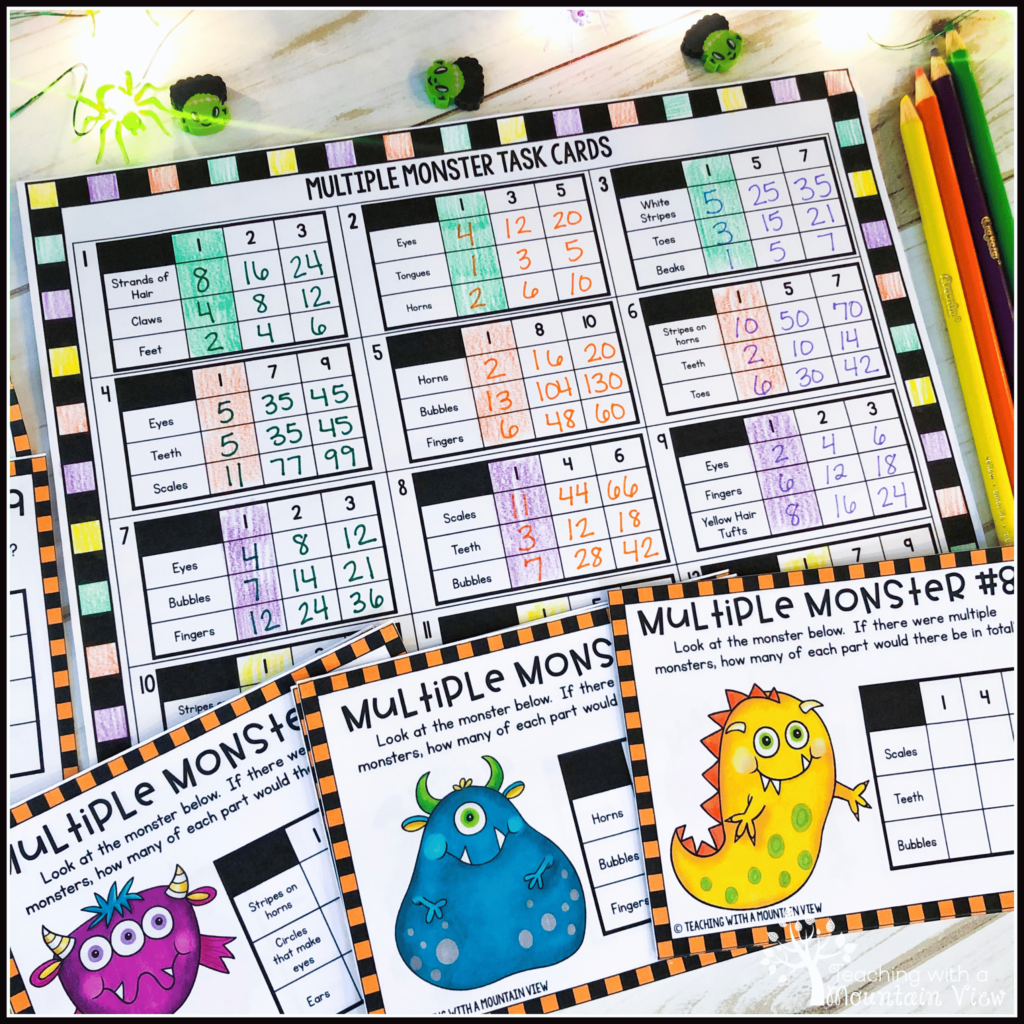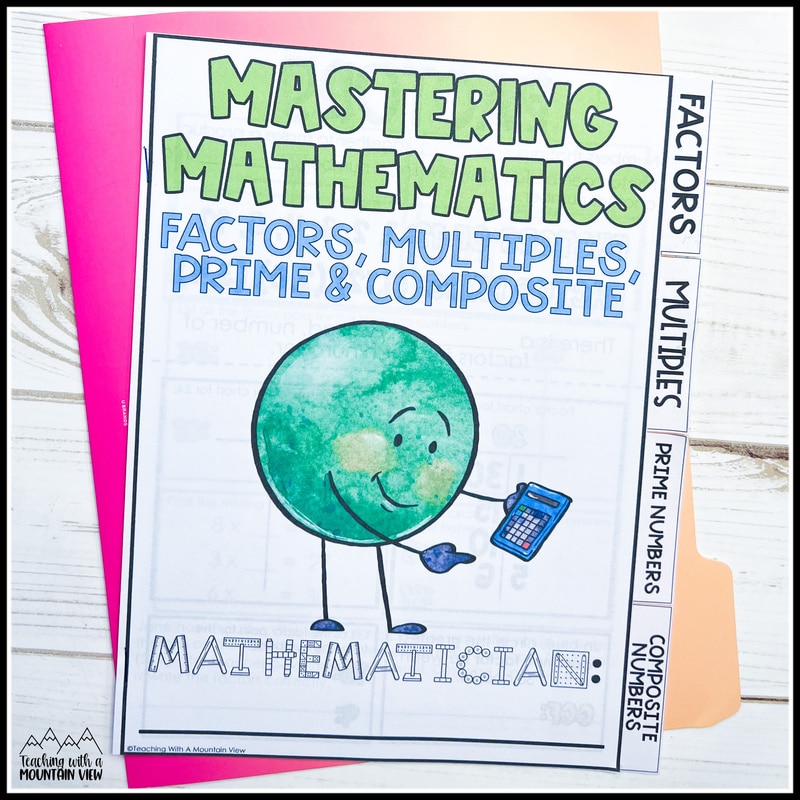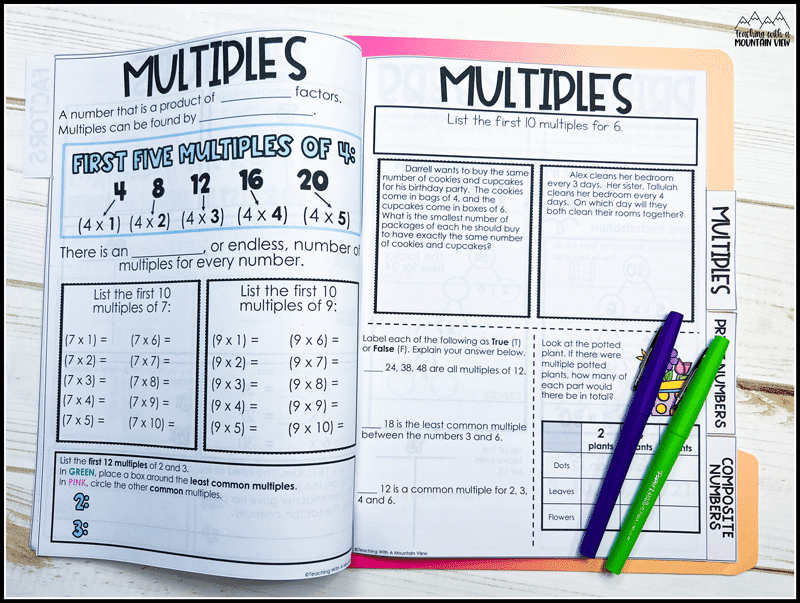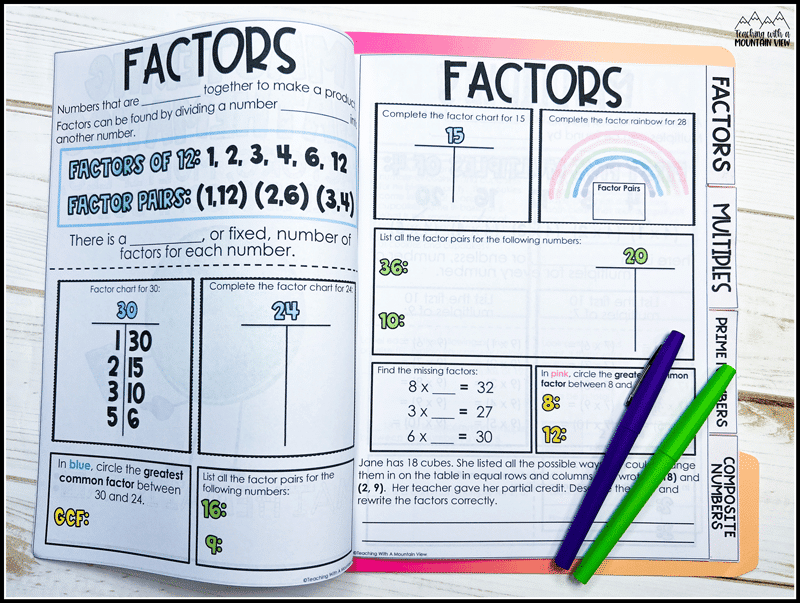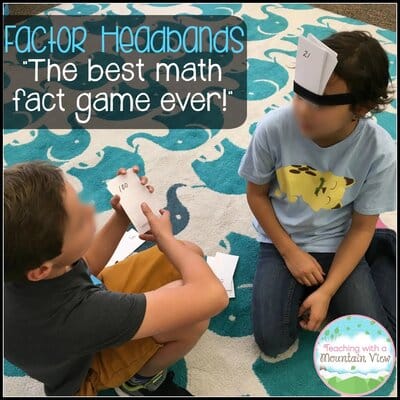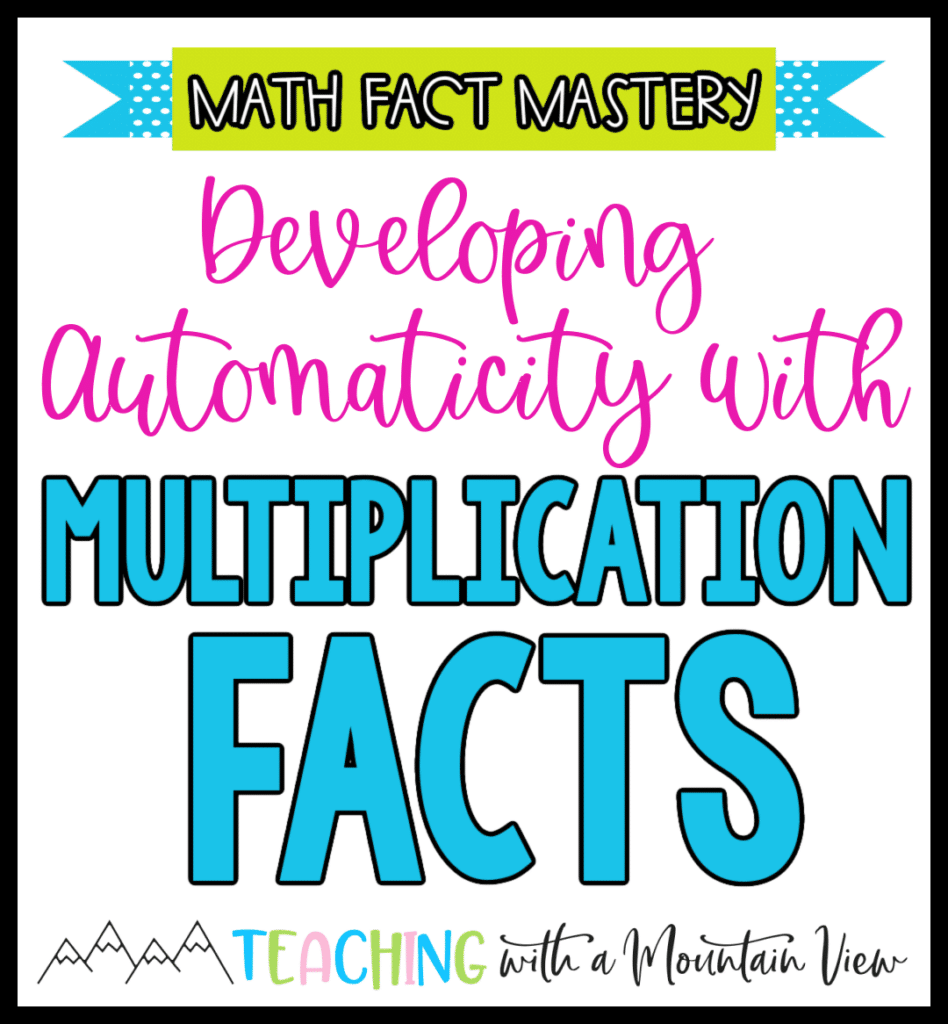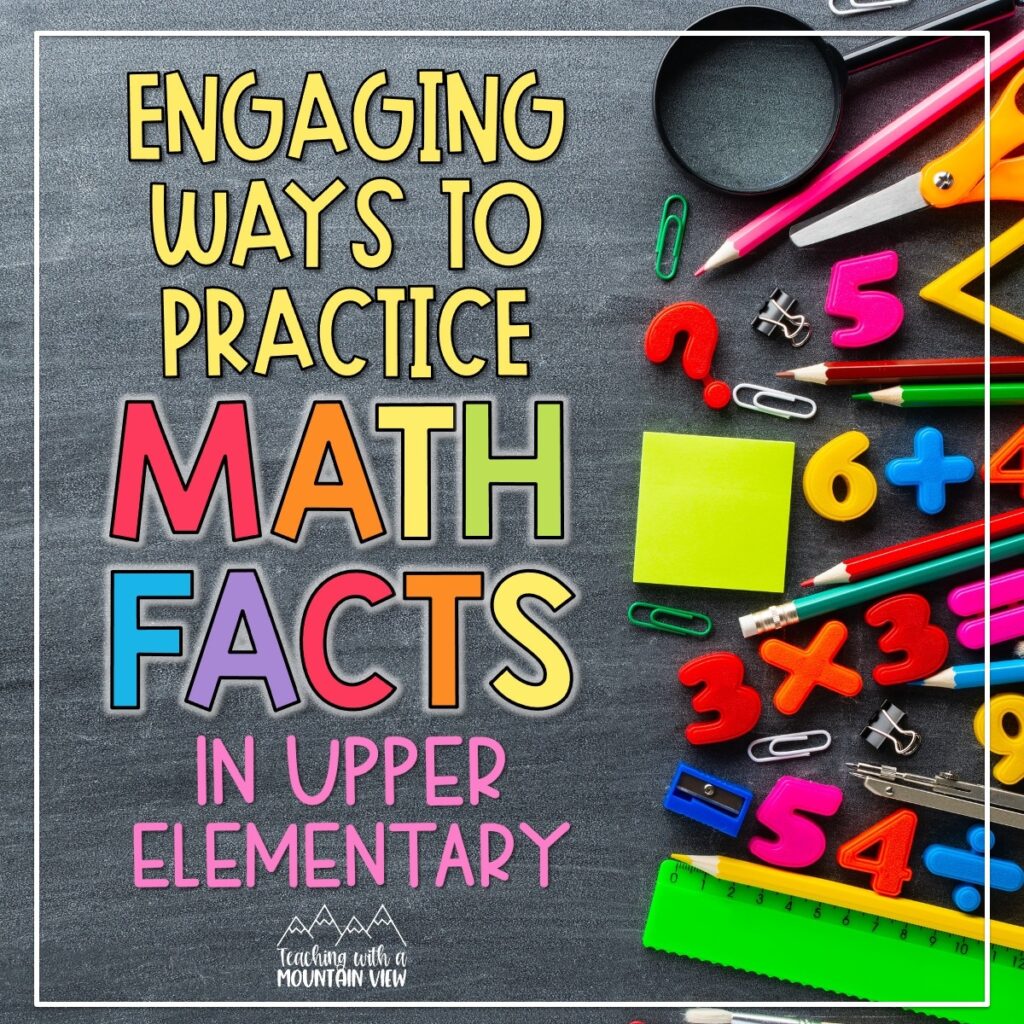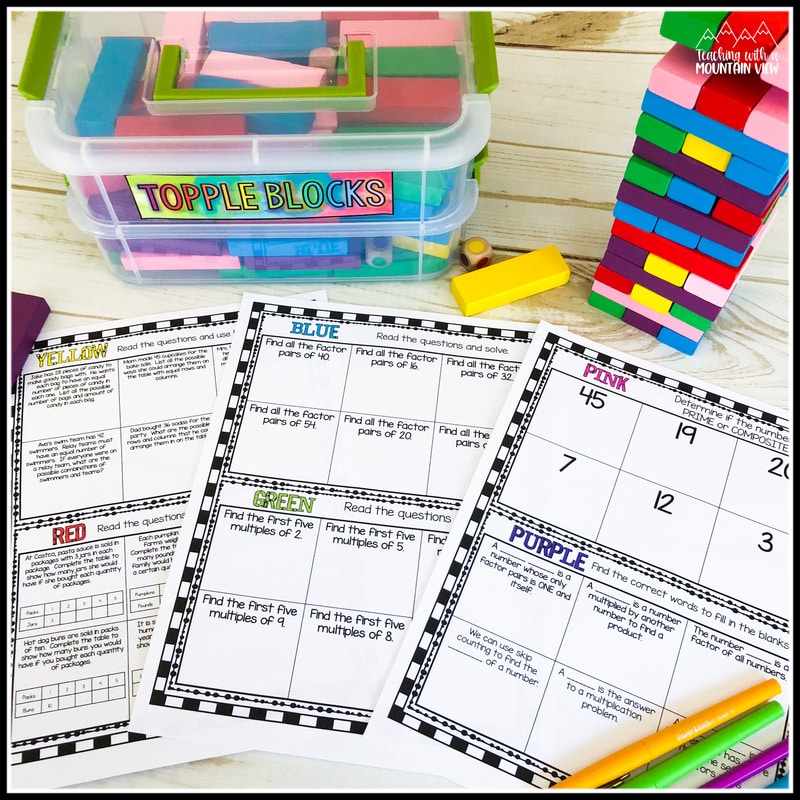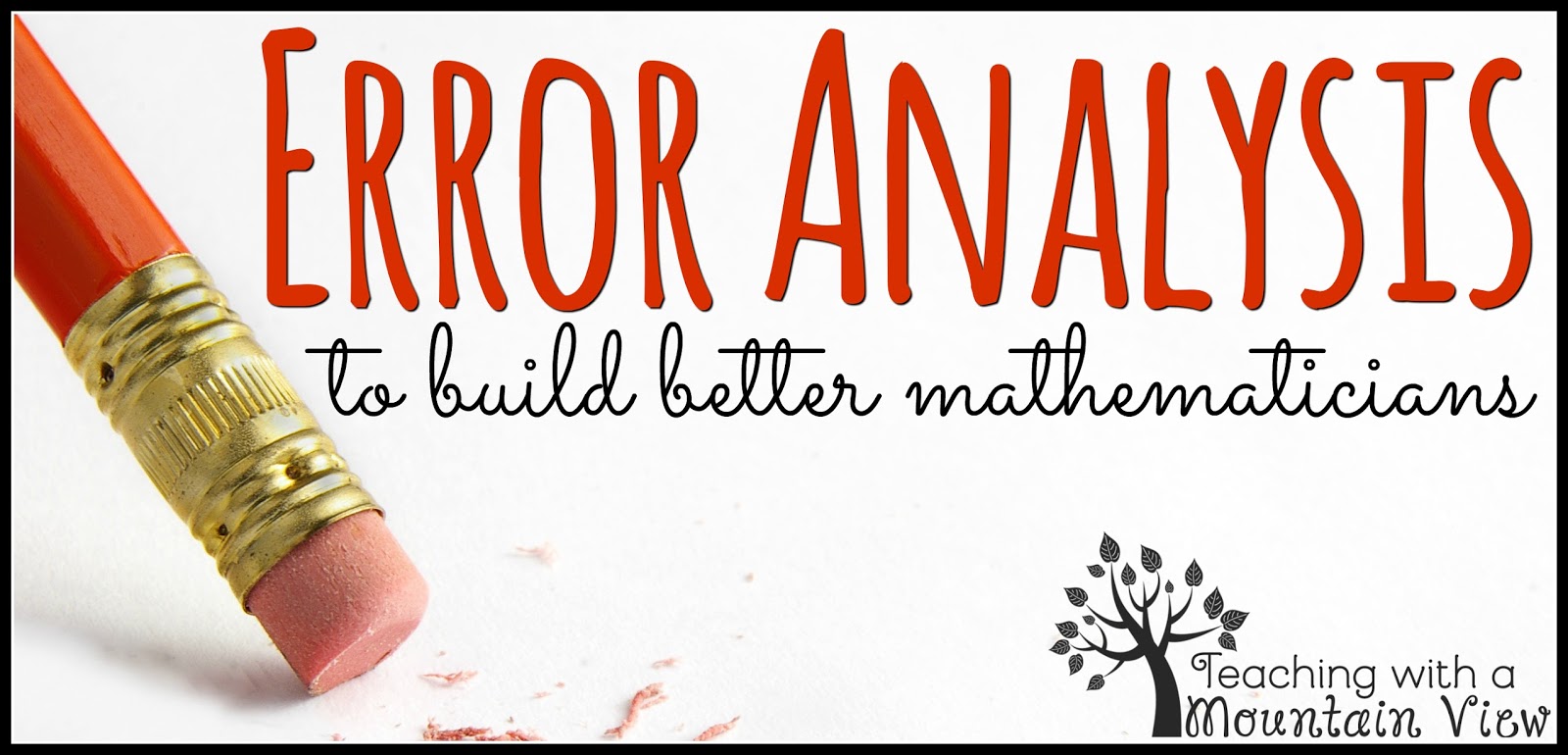- Multiplication
- |
- Free
- |
- Math
Factors, Multiples, and Math Facts… oh my!
By Mary Montero
Share This Post:
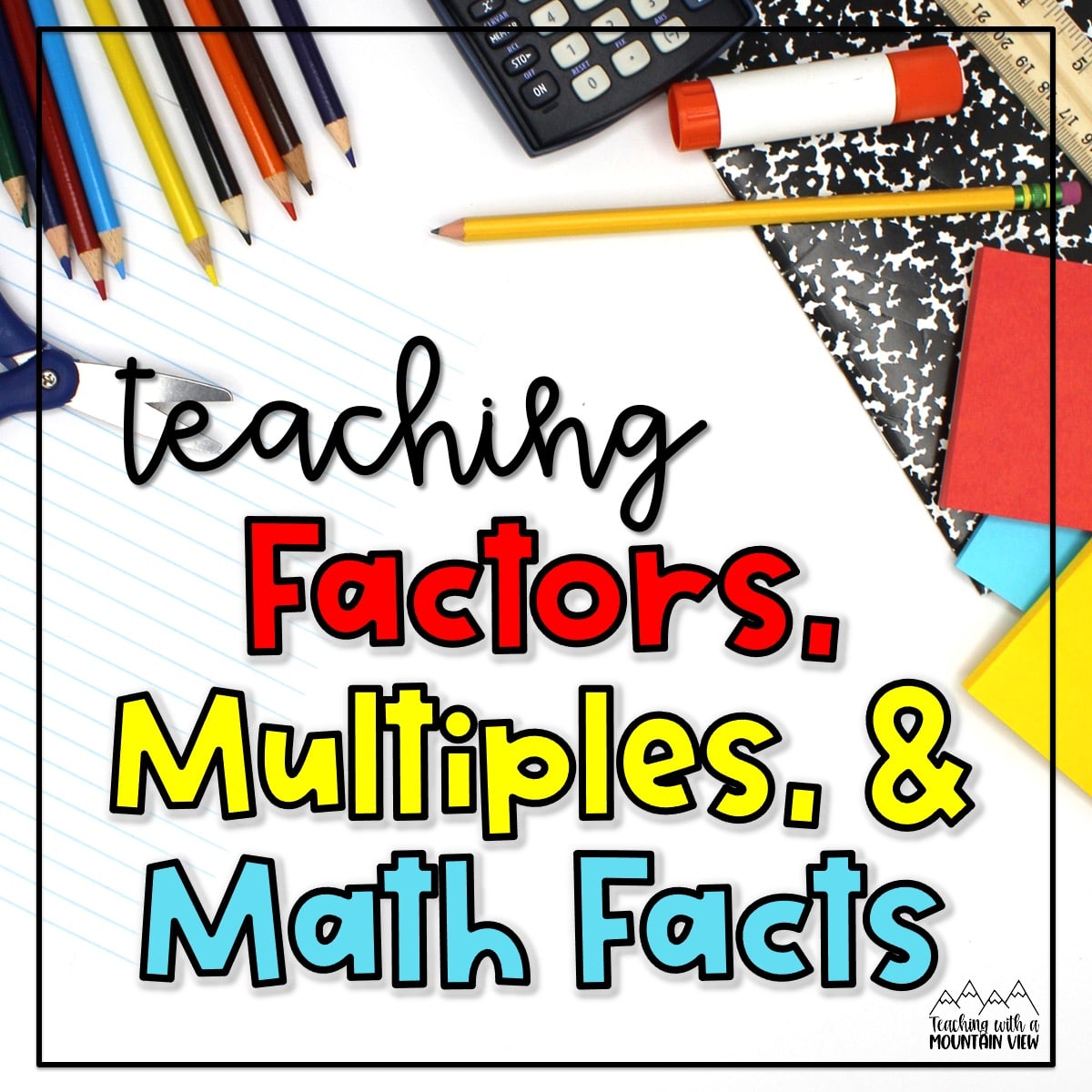
Working with factors and multiples is an important upper elementary skill that helps students solidify number relationships. However, it isn’t a skill that comes easily for all students. Here are numerous ways I teach and reinforce factors, multiples, and math facts in 4th and 5th grade. I’ve also included several great ideas from other upper elementary teachers to give you even more options.

How To Teach Factors and Multiples
I look forward to this unit every year because I get to introduce students to the Multiple Monster and Factor Ninja and be extra dramatic! We all stand up, act like ninjas, and shout, “Factor Ninja CHOPS UP PRODUCTS!” Then we put on our scariest voices, bend down to the floor, gradually raise up, and get bigger while shouting, “Multiple Monster MAKES NUMBERS BIGGER!” Students LOVE it.
We made this fun notebook page together and had a lot of fun chopping up factors and being monsters to make our multiples. You can download this math ninja activity FREE in my TpT filing cabinet here.
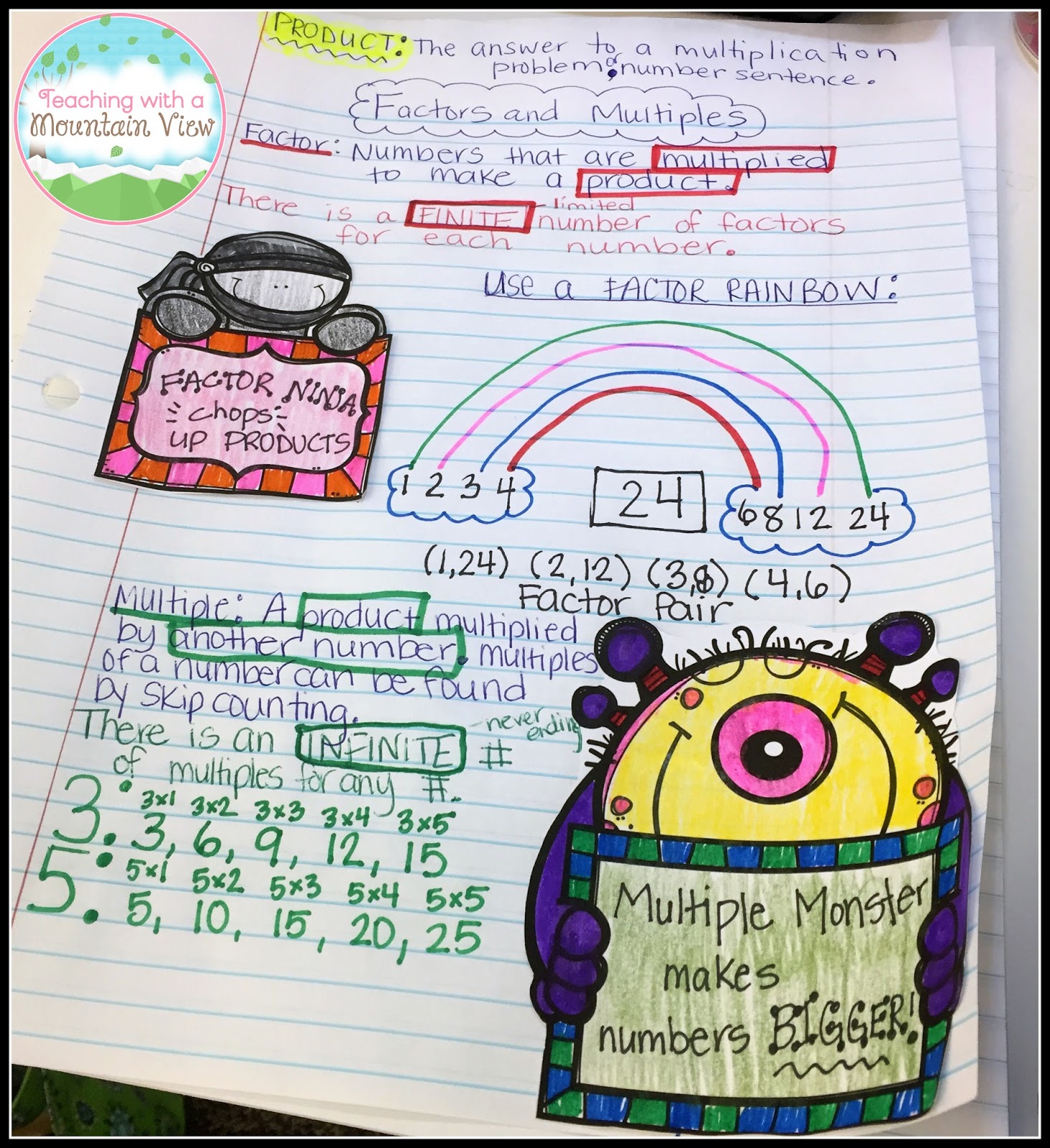
These free Multiple Monster Task Cards are also perfect to use with this activity to reinforce multiples.
I also created these FREE posters and interactive notebook pages to go with our prime, composite, factors and multiples unit. The download includes 2 posters and 6 interactive notebook sheets!
I’ve shared how I use math flip books before, but I can’t sing their praises enough! You can take your instruction of factors, multiples, prime, and composite numbers to the next level with this set of DIFFERENTIATED flipbooks. Your students will absolutely love these math lessons, and you will love the teaching, skill reinforcement, and practice they provide as they cover factors, multiples, prime and composite numbers. It is a great visual guide for students learning these important factors and multiples concepts during the unit, and the perfect reference guide all year long too!
I also have students practice independently or in centers using this mega set of factors and multiples task cards. The 32 digital and printable task cards help students differentiate between the two different vocabulary terms.
Finally, several members of our FREE Inspired In Upper Elementary Facebook group also suggested arrays as a way to practice factors and multiples. Jesse P. has her students build arrays with color tiles (Amazon affiliate link) to find factors. Brooke F. uses pop-its (Amazon affiliate link), which are always a hit!
How To Help Students With Math Fact Fluency
Just like reading fluency improves comprehension, math fact fluency improves understanding across a variety of upper elementary math skills. Here are several ways we practice math facts all year long to keep skills sharp!
This factor headband game is so simple to set up and you can play it quickly in just a few minutes each day.
This Tips for Teaching Multiplication Facts post is packed with tips, games, songs, app suggestions, and more!
There are SO MANY ways to practice that I also followed it up with this Engaging Math Facts post that includes more practice tips and information about our Multiplication Celebration.
More Math Fact Memorization Tips
Here are a few more great ideas from our FREE Inspired In Upper Elementary Facebook group:
- Play skip counting games or games like Buzz to bring forward the idea of multiples. (Susan S.)
- For multiples use a 120 chart and they should skip count. (Jess P.)
- I made a packet! We list three multiples, all the factors (using divisibility rules), and determine prime or composite for two numbers a day (2-100). It’s so routine that they eventually catch on! (Lisa J.)
- The only thing that helped my daughter with memorizing her facts was multiple songs. I used the ones that also sang the actual facts too, so she wasn’t just memorizing the multiples. Honestly, it worked like a charm! We tried EVERYTHING prior to that: flash cards, writing them out a million times and saying them as we did, times tests, Xtra math, reflex, etc. NOTHING HELPED AT ALL. Then we found the songs, and all is right with the world! (Liz C.) Try Multiplication Mashup or Schoolhouse Rock!
Alternatives to Math Fact Memorization
No matter how often we practice or how many different strategies we share, memorizing math facts doesn’t always click for all students. In those cases, sometimes it’s best to differentiate by using multiplication charts.
Here’s what a few teachers in our Inspired In Upper Elementary Facebook group said about using math charts as a way to scaffold instruction!
- Honestly, I think you need to just give them a multiplication chart to use so that they understand the lessons and then continue to work with memorizing the facts on the side. We deal with this with a few students every year in 5th grade, and they seem to eventually catch on to the facts. Not having facts memorized can really put them behind when learning other concepts and skills. The chart will help get them over that hurdle. There is no way to move them forward with all of the standards we have to cover that need multiplication otherwise. They just get further behind. We are able to do small group lessons during another part of the day and always review and practice basic multiplication with them at that time. (Rachel V.)
- We also teach students to fill in a multiplication grid, and how to use it to find multiples and factors. A blank multiplication grid is one of the resources they can use on the state test also. If they can fill it in, they can use it on the test. (Karen D.)
- We use the chart. As kids grow more efficient in multiplication, they themselves put the charts away. But I hate to see a kid struggle to learn a math skill solely because they aren’t fluent in basic facts. This way they can learn and master skills and see success on the skill WHILE they master facts. For me this is important because it lets the kids see why the facts help them be a better mathematician, rather than feeling defeated because they don’t know them. They all know by year’s end those charts are OFF LIMITS for state testing. So there’s an end deadline. (Jennifer D.)
Additional Factors and Multiples Practice
Here are just a few more ways we practice factors, multiples, and math facts to keep skills fresh.
How do we practice factors and multiples in a fun way? Topple! I almost always have a game in our rotations, and this Factors and Multiples Topple Blocks Game will engage your students in practicing factors, multiples, prime, and composite numbers.
I also use this FREE review activity and FREE quiz near the end of our unit.
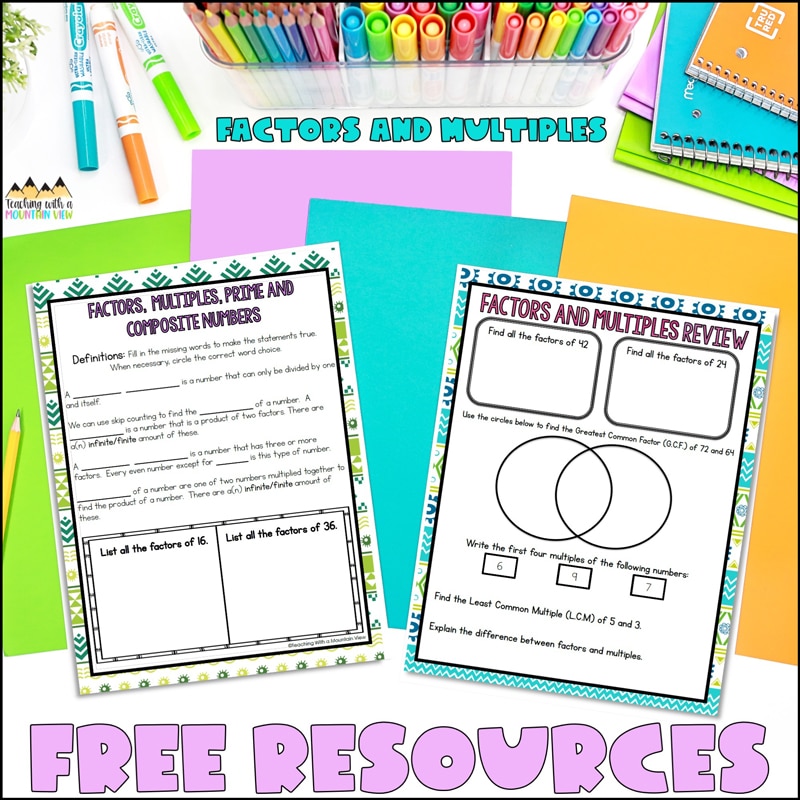
Finally, we use error analysis to dig deeper into our math skills. This prime, composite, factors, and multiples set will challenge your students. Some of these problems are tricky, but the students get a sense of satisfaction by figuring out what went wrong. This type of practice is perfect to include with the FREE posters and notebook templates above!
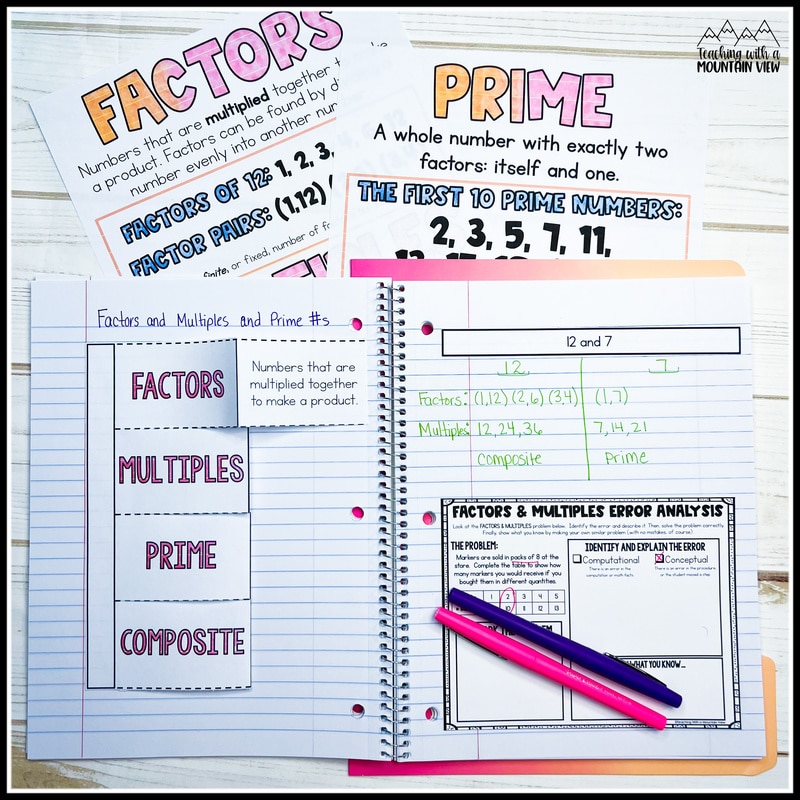
If you’re new to error analysis, this error analysis post can help you get started.
Mary Montero
I’m so glad you are here. I’m a current gifted and talented teacher in a small town in Colorado, and I’ve been in education since 2009. My passion (other than my family and cookies) is for making teachers’ lives easier and classrooms more engaging.







